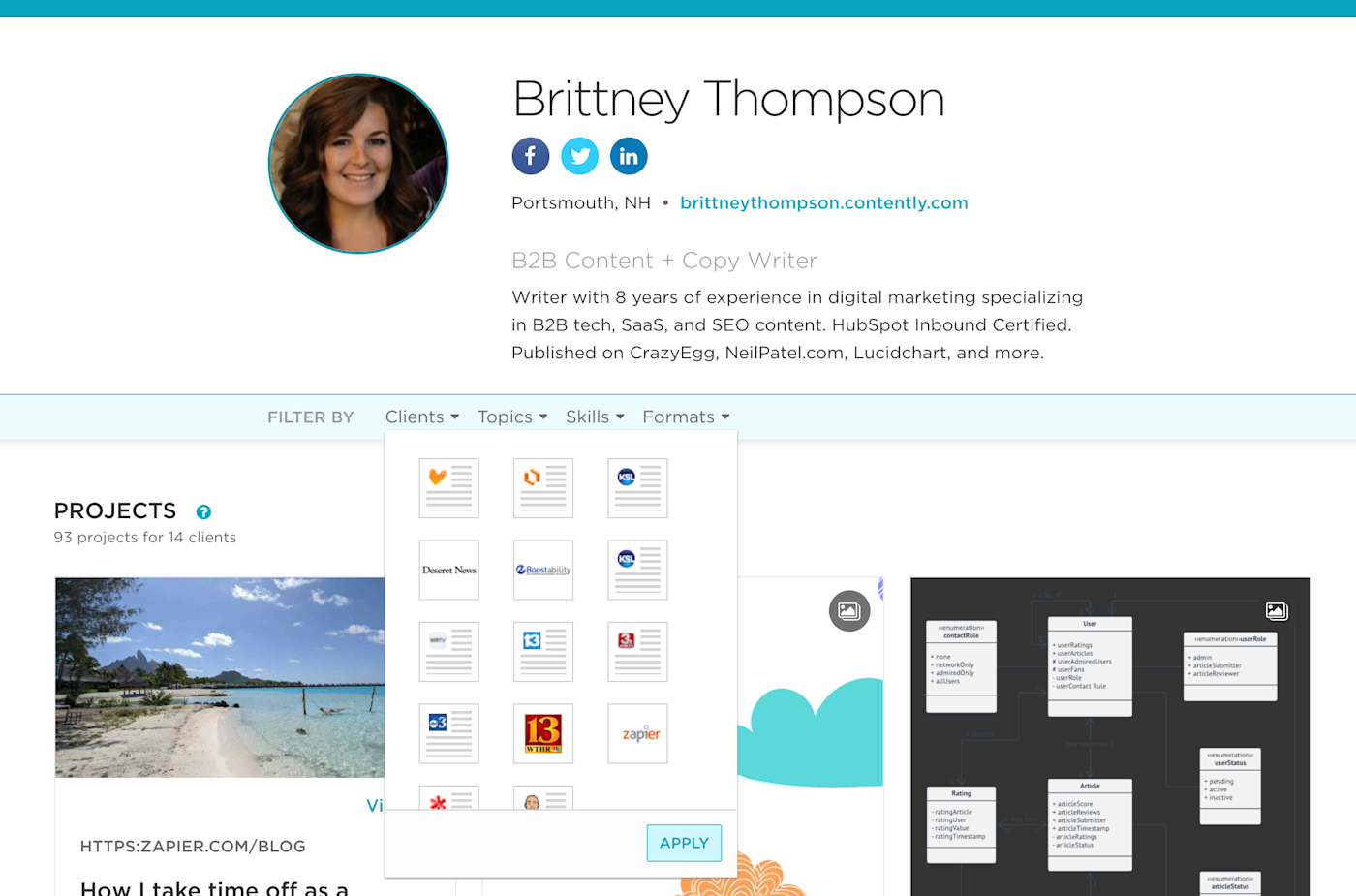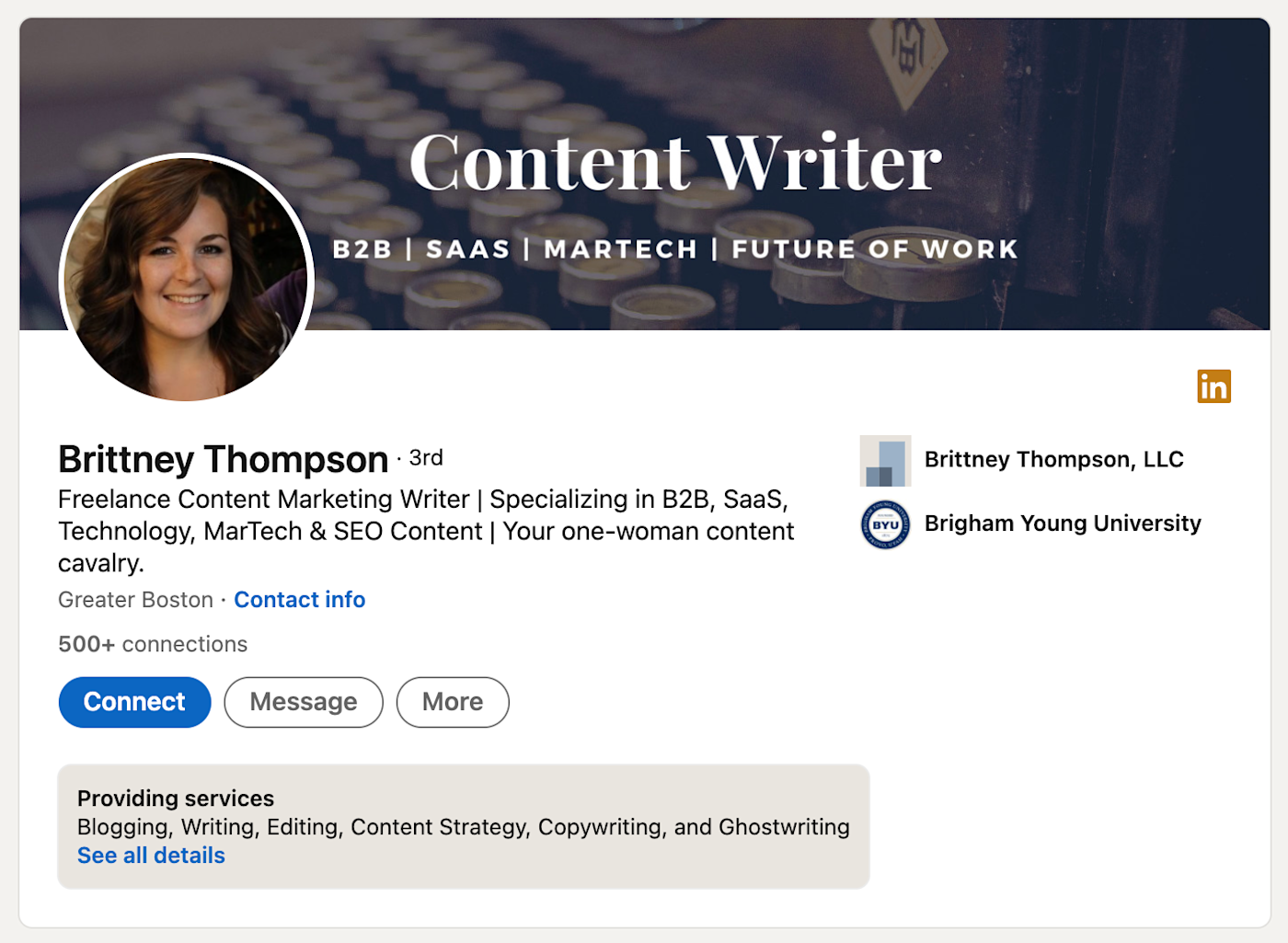When I quit my full-time job and started freelancing five years ago, I figured it was just a stop-gap until I landed my next marketing job. I had never fancied myself a business owner and didn’t think I could command a freelance income that rivaled a full-time salary.
But as time passed and I kept procrastinating my “real job” search, I started taking freelancing as a permanent career move more seriously. I’d always valued independence and had come away burnt out from my last job, so the flexibility and autonomy that freelance writing gave me was appealing. Coming from a content marketing background, I knew I had the skills to deliver value to clients, but if I was going to do this long-term, I needed to start making more money.
In January of 2021, I decided to go full-tilt into building my business. I made a goal to double my freelance income from 2020, going from ~$40,000 to $80,000. I thought that was an ambitious target and assumed it would take me months to land new high-paying clients. Instead, within about six weeks of marketing myself, I had more work than I could handle.
And by the summer, I was billing $10,000 a month or more.
How to build a $10,000/month freelance business
While it might appear that I achieved my goals almost overnight on paper, that success was built on a foundation that was years in the making. I’ve been in the content marketing industry since 2013 and had a solid portfolio when I decided to scale.
As a result, I had the training, skills, and experience needed in addition to a valuable industry network. This foundation, combined with hard work and good luck, set me up to succeed when I then applied strategic steps to grow my business.
That being said, ramping up to $10,000 months is more doable than you might think—even for newer freelancers. Whether you’re starting from the ground up or have been freelancing for a while, the steps you can take to grow your business will look pretty similar. Here’s what worked for me.
-
Raise your rates
-
Drop low-paying clients
-
Book regular, long-term clients
-
Specialize
-
Set value- and project-based pricing
-
Change your mindset
-
Market yourself
1. Raise your rates
Raising your rates can be one of the more intimidating things to do as a freelancer. But remember: rate increases are standard business practice. And in order for you to operate your business sustainably, your rates can’t remain static.
This is also the fastest way to bring in more income. If your rates stay the same, the only way to bring in more money is to take on more projects. But this can drive burnout and cap your earnings pretty quickly—particularly if your rates are lower to begin with.
When I decided to scale my business this past year, I was billing on average between $2,500 and $4,000 per month. I had two main anchor clients plus a handful of other clients I worked with less regularly. One anchor client has been with me since 2018, but I hadn’t raised my rates with them in a couple years. I approached them when our annual contract was coming up for renewal and simply quoted my updated rate:
Hi Client,
As we discussed briefly last month, I’d like to update the rate on this new contract. My new rate would be $XXX/article. I do want to be cognizant of your budget, so if there’s any concern, let’s discuss. I’ve really enjoyed working together the past few years and look forward to our continued partnership.
Thank you,
Brittney
From there, we negotiated a new project cadence from four articles a month to two in order to accommodate my new rate and their budget. Initially, this represented a drop in total income from that client. However, cutting my assignments in half while getting paid more per piece actually created more income potential for me because it opened up my availability to take on higher-paying projects from new clients.
Which leads me into the next tip.
2. Drop low-paying clients as you replace them with new, higher-paying clients
It’s ok to outgrow clients. As you raise your rates, some clients won’t be able (or willing) to pay. Eventually, you’ll need to make room for higher-paying clients by dropping your lowest-paying clients so you can focus on the work that pays the most.
So far, I haven’t had to formally drop any clients entirely, but I have adjusted the amount of work I’ll accept from my lower-paying clients—and I make sure to quote higher standard rates for new clients that I onboard.
3. Book regular, long-term clients
I never take one-off projects. Instead, I focus on building long-term relationships with clients for ongoing work. This is because long-term or retainer clients provide consistent income that lets me provide better value.
It takes time to onboard a client and get to know their business and strategy, so it’s inefficient to do that over and over for short-term gigs. Plus, by working with clients on an ongoing basis, I can deliver greater value (and charge higher rates as a result) because I have a deeper understanding of their business and content needs.

Fortunately, this has been one of the easiest strategies for me to follow as most prospective clients I’ve found are interested in long-term relationships with freelancers as well. Which makes sense, because just as it takes time to onboard a new client, it takes time for clients to find and onboard new freelancers. It’s in their best interest to invest in a freelancer they can trust and rely on again and again—instead of finding a new writer every time they have a project.
4. Specialize
If you’re a freelancer, you’ve probably heard that it’s important to “niche down.” And there’s good reason this advice is so prevalent—it works.
While it’s possible to make great money as a generalist, specializing builds your value and reputation—and helps you market your business more effectively.
When you specialize, you develop expertise in those areas over time. This allows you to dive deeper into the industry (or service) and thus deliver greater value to your clients. It also helps you build a reputation as the go-to provider for that industry. All of this makes it easier to market your business to your ideal clients, land those clients, and charge more for your work.
If you haven’t already specialized, take some time to feel out the right fit for you and your business. Don’t be afraid to initially accept work from a variety of clients and industries because that will help you identify what areas you like best and are most skilled in.
For example, after writing as a generalist for a couple of years, I naturally began to gravitate toward a few select niches. Now, I specialize in (and market myself) as a long-form content writer for B2B SaaS, technology, and the future of work. As a result, my ideal clients often come to me now because I showed up in their search results or was referred by another client or colleague.

You can always take on projects outside your niche if they’re fun, interesting, or fulfill other goals. But when you specialize, you can provide more value and increase your rates accordingly.
5. Set value-based pricing by the project
A key strategy for building my business has been quoting value-based project rates rather than per-word or per-hour rates. There are a couple reasons for this.
First, rates shouldn’t only be about how much time you put in (i.e., hours worked) but what the deliverable itself is worth to your clients. For instance, if I write an eBook that brings in qualified leads that convert for my client, that’s potentially tens of thousands of dollars of value from one piece of content. So when assessing how to charge for a project, I always keep in mind the value of the content to the client.
Second, efficiency comes with expertise (especially if you’re working with clients long-term). If you’re charging hourly, the faster you produce, the less money you make. Project rates mean you don’t get penalized for getting better at your job.
Finally, I find that project pricing is easier for clients to approve psychologically. For instance, quoting $150/hr will give lots of people sticker shock. But quote a blog post at $500, and the conversation is reframed around the value of the content, not your worth as a person. And it makes it easier for everyone to plan project budgets and avoid nickel and diming over hours or word count.
6. Change your mindset from an employee to a business owner
Mindset might sound woo-woo, but it’s such an important part of growing a sustainable freelance business. Remember: A one-person freelance business is still a business.
So don’t ask for raises. Don’t ask permission for time off. You’re not an employee, and your clients aren’t your boss. Changing your mindset isn’t always easy to do, but it’s made a big difference in the way I conduct business.
Shifting my mindset helps me take the emotion out of contract negotiations and stand firm on decisions that are best for me (and my business). It also helps me position myself as the expert consultant in the relationship, which adds value for my clients and helps me command higher rates.
7. Keep marketing yourself
Consistent marketing is essential for growing your freelance business and building a pipeline of qualified prospects and, eventually, a strong referral engine. Especially when you’re first starting out, clients typically won’t come to you. You’ll need to go find them. And that means marketing and prospecting.
This isn’t a one-time exercise. Set aside time each week or at least each month to network and outreach.
-
Use LinkedIn to find potential clients to cold email. LinkedIn has been one of the best tools I’ve used for finding clients. I search for companies in my target industries, filtering by things like size and funding to find prospects that are likely to be a good fit. Another strategy I use is to search job listings on LinkedIn or other job boards for full-time employees in content marketing. Then I reach out to the hiring manager to ask if they could use a freelancer to support the team during the hiring and onboarding process. This is a great way to find clients that have an immediate need that you can help with.
-
Follow up with past clients. Never underestimate the power of the follow-up. Reach out to past clients to see if they have any work they need help with. Even if they don’t have an immediate need, touching base regularly keeps you top-of-mind for when they do have projects.
-
Talk to friends. When you’re new to the industry, it can feel overwhelming to find an “in.” But you’d be surprised how helpful your current network of friends can be—even if none of them are in your target industry themselves. Post on social media that you’re in business and talk to friends about what you’re doing. Even if your immediate friends don’t hire you, they may know someone in your industry who needs help. And referrals are one of the best ways to land a client.
-
Join professional groups. I’ve landed multiple clients from professional writer groups on Facebook. The key to getting the most out of these groups is to participate and add value. Keep in mind that not all groups are equally as valuable. I initially joined around half a dozen writing groups when I first started freelancing. But as I followed them, I quickly homed in on the ones that were the right fit for me based on the focus of the community, the level of activity, and the value people shared. Groups that had a lot of spam or that posted low-paying gigs were quickly weeded out.
-
Attend networking events and industry conferences. Networking events and industry conferences are a great way to build out your network over time. While they can be intimidating if you’ve never been to one or are an introvert like me, networking at these events helps you build valuable professional relationships. These are often a long game. The work isn’t done when the event ends. You then need to maintain those connections you made and, when possible, participate in future events. Often you’ll run into the same people each year, further strengthening those relationships.
Wherever you’re starting from, with the right building blocks and consistency, you can grow your business relatively fast. Within weeks, I had more work than I could handle. And within a few months, I had hit (and exceeded) the once-elusive $10,000 month.
Once you get the momentum going, you’ll be surprised how quickly you’ll book up. Then you’ll have to learn to say no. But that’s a topic for another day.
[adsanity_group align=’alignnone’ num_ads=1 num_columns=1 group_ids=’15192′]
Need Any Technology Assistance? Call Pursho @ 0731-6725516







